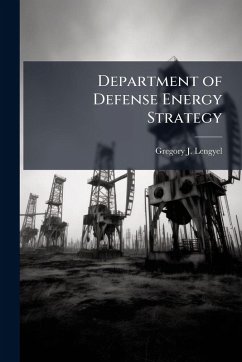The United States has a National Security problem, energy security, in which the Department of Defense has a unique interest. The United States imports 26% of its total energy supply and 56% of the oil it consumes. The DOD is the largest single consumer of energy in the United States and energy is the key enabler of US military combat power. Huge energy consumption, increased competition for limited energy supplies, ever increasing energy costs, and no comprehensive Energy Strategy or oversight of energy issues in the DOD have created vulnerabilities. These include potential fuel and electricity supply disruptions as well as foreign policy and economic vulnerability. The DOD needs a comprehensive Energy Strategy and organizational structure to implement a strategy to improve National Security by decreasing US dependence on foreign oil, ensure access to critical energy requirements, maintain or improve combat capability, promote research for future energy security, be fiscally responsible to the American tax payer, and protect the environment. This strategy can be implemented through leadership and culture change, innovation and process efficiencies, reduced demand, and increased/ diversified energy sources. This work has been selected by scholars as being culturally important, and is part of the knowledge base of civilization as we know it. This work was reproduced from the original artifact, and remains as true to the original work as possible. Therefore, you will see the original copyright references, library stamps (as most of these works have been housed in our most important libraries around the world), and other notations in the work. This work is in the public domain in the United States of America, and possibly other nations. Within the United States, you may freely copy and distribute this work, as no entity (individual or corporate) has a copyright on the body of the work. As a reproduction of a historical artifact, this work may contain missing or blurred pages, poor pictures, errant marks, etc. Scholars believe, and we concur, that this work is important enough to be preserved, reproduced, and made generally available to the public. We appreciate your support of the preservation process, and thank you for being an important part of keeping this knowledge alive and relevant.
Bitte wählen Sie Ihr Anliegen aus.
Rechnungen
Retourenschein anfordern
Bestellstatus
Storno








